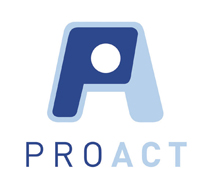October 6 was World Cerebral Palsy Day, and ProAct’s Diversity, Equity and Inclusion Committee shared this overview of the disorder to promote understanding and help staff to serve participants more effectively.
Source: Cerebralpalsy.org
Cerebral palsy is considered a neurological disorder caused by a non-progressive brain injury or malformation that occurs while the child’s brain is under development. It primarily affects body movement and muscle coordination. Though cerebral palsy can be defined, having cerebral palsy does not define the person who has the condition. There are more than 17 million people across the world living with cerebral palsy. Another 350 million people are closely connected to a child or adult with cerebral palsy. It is the most common physical disability in childhood. Cerebral palsy is a permanent disability that affects movement. Its impact can range from a weakness in one hand, to an almost complete lack of voluntary movement.
Definition of cerebral palsy
While cerebral palsy (pronounced seh-ree-brel pawl-zee) is a blanket term commonly referred to as “CP” and described by loss or impairment of motor function, cerebral palsy  is caused by brain damage. The brain damage is caused by brain injury or abnormal development of the brain that occurs while a child’s brain is still developing — before birth, during birth, or immediately after birth.
is caused by brain damage. The brain damage is caused by brain injury or abnormal development of the brain that occurs while a child’s brain is still developing — before birth, during birth, or immediately after birth.
Cerebral palsy affects body movement, muscle control, muscle coordination, muscle tone, reflex, posture, and balance. It can also impact fine motor skills, gross motor skills and oral motor functioning.
It was once thought that cerebral palsy was caused by complications during the birthing process. While this does happen, it is now widely agreed that birthing complications account for only a small percentage, an estimated 10 percent, of cerebral palsy cases.
Current research suggests most cerebral palsy cases result from abnormal brain development or brain injury prior to birth or during labor and delivery. Accidents, abuse, medical malpractice, negligence, infections, and injury are some known risk factors that may lead to cerebral palsy.
Cerebral palsy causes physical impairment
 An individual with cerebral palsy will likely show signs of physical impairment. However, the type of movement dysfunction, the location and number of limbs involved, as well as the extent of impairment, will vary from one individual to another. It can affect arms, legs, and even the face; it can affect one limb, several, or all.
An individual with cerebral palsy will likely show signs of physical impairment. However, the type of movement dysfunction, the location and number of limbs involved, as well as the extent of impairment, will vary from one individual to another. It can affect arms, legs, and even the face; it can affect one limb, several, or all.
Cerebral palsy affects muscles and a person’s ability to control them. Muscles can contract too much, too little, or all at the same time. Limbs can be stiff and forced into painful, awkward positions. Fluctuating muscle contractions can make limbs tremble, shake, or writhe.
Balance, posture, and coordination can also be affected by cerebral palsy. Tasks such as walking, sitting, or tying shoes may be difficult for some, while others might have difficulty grasping objects.
Other complications, such as intellectual impairment, seizures, and vision or hearing impairment also commonly accompany cerebral palsy.
Every case of cerebral palsy is unique to the individual
One person may have total paralysis and require constant care, while another with partial paralysis might have slight movement tremors but require little assistance. This is due in part by the type of injury and the timing of the injury to the developing brain.
Cerebral palsy is non-life-threatening
Except for children born with a severe case, cerebral palsy is a non-life-threatening condition. Most children with cerebral palsy are expected to live well into adulthood.
Cerebral palsy is incurable
Cerebral palsy is damage to the brain that cannot currently be fixed. Treatment and therapy help manage effects on the body.
Cerebral palsy is non-progressive
The brain lesion is the result of a one-time brain injury and will not produce further degeneration of the brain.
Cerebral palsy is permanent
The injury and damage to the brain is permanent. The brain does not “heal” as other parts of the body might. Because of this, the cerebral palsy itself will not change for better or worse during a person’s lifetime. On the other hand, associative conditions may improve or worsen over time.
Cerebral palsy is not contagious; it is not communicable
entionally increase the likelihood a child will develop cerebral palsy through abuse, accidents, medical malpractice, negligence, or the spread of a bacterial or viral infection.
Cerebral palsy is manageable

In most cases, cerebral palsy is caused by damage to the developing brain. Brain damage is not spread through human contact. However, a person can intentionally or unintThe impairment caused by cerebral palsy is manageable. In other words, treatment, therapy, surgery, medications, and assistive technology can help maximize independence, reduce barriers, increase inclusion, and thus lead to an enhanced quality of life.
Cerebral palsy is chronic
The effects of cerebral palsy are long-term, not temporary. An individual diagnosed with cerebral palsy will have the condition for their entire life.
Every case of cerebral palsy is unique to the individual. One person may have total paralysis and require constant care, while another with partial paralysis might have slight movement tremors but require little assistance. This is due in part by the type of injury and the timing of the injury to the developing fetus.


